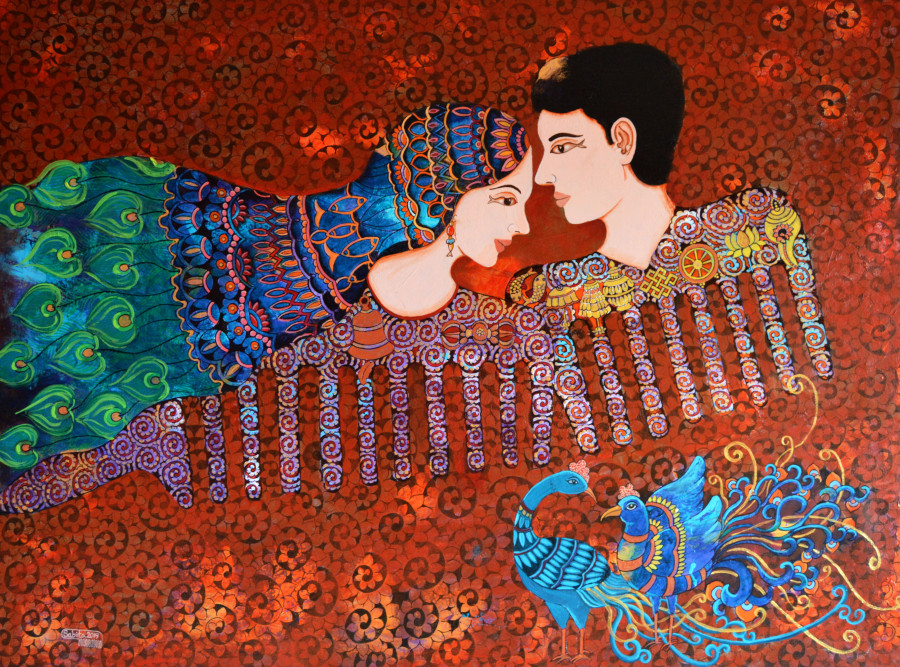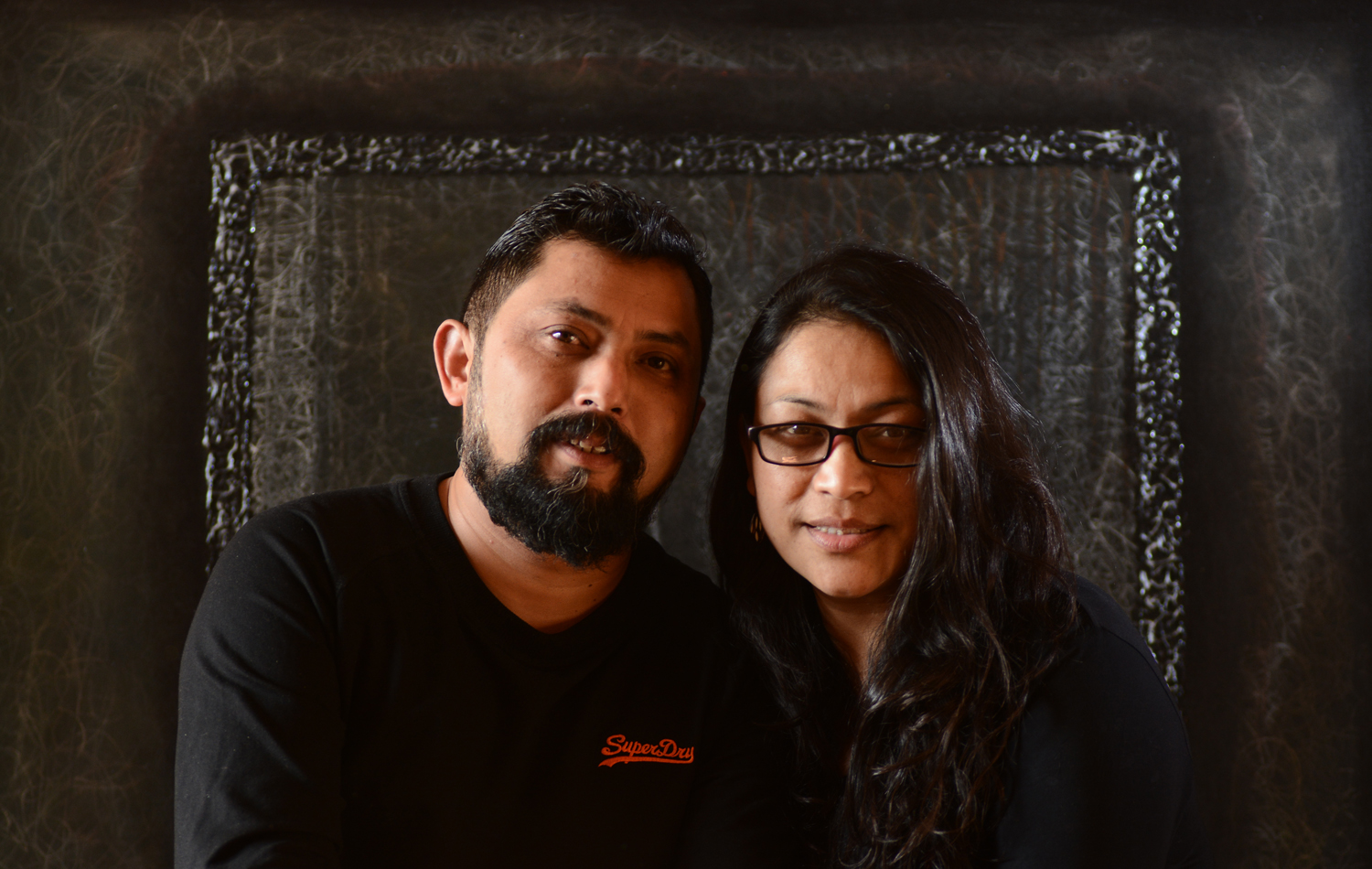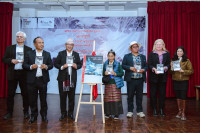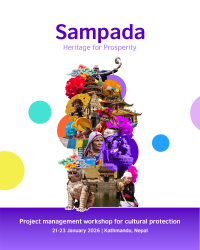Culture & Lifestyle
Making art collection democratic
Erina Tamrakar and Asha Dangol’s Himalayan Art Fest follows an inclusive model, which promotes Nepali art to Nepalis.
Niranjan Kunwar
A writer once wrote: Our fundamental anxiety is that we will pass through the world and leave no mark. Perhaps that is why some compose poems and some draft books. Some people design plazas and some build bridges. Then there are those who hold brushes and dip them in colour; they look at the world with keen eyes and record unique interpretations on canvas. This existential anxiety also compels us to reach out to friends and share our interpretations from our situated standpoints.
This drive to create and to connect led Erina Tamrakar to Lalit Kala campus in the late 1980s to study fine arts. At Lalit Kala, she met other like-minded fellows, including Asha Dangol, who would eventually be her life partner. During that period, prospects for artists after graduation were minimal. Commercial art galleries scattered around the Durbar Squares sold representations of mountains and valleys to excited foreigners. And a few government jobs related to the arts were occupied by senior artists. Besides, Tamrakar and Dangol had graver passions and larger ambitions.
To delve deeper and practice their craft, they formed the Kasthamandap Artists Group (KAG) in 1994 with five other artists under the leadership of late Prashant Shrestha.
“We each contributed Rs800 and rented a room inside an acquaintance’s building in Pyukha, New Road,” Dangol reminisces.
Although Tamrakar and Dangol have devoted their adult lives primarily to art-making, they have dabbled in different ventures to make ends meet. Himalayan Art Festival (HAF) scheduled from September 29 to October 3 at Nepal Art Council, Babarmahal, is their most ambitious initiative.
According to them, various art festivals took place in Kathmandu but non catered to buying, selling and appreciation of contemporary artworks. To fill this gap, they reached out to their network and decided to start HAF.
Nepal’s socio-political landscape has dramatically evolved in the past two decades. Fresh graduates from Kathmandu University and Srijana College of Arts mingle with returnees from India and the West. This social media generation might be savvier but they still need a supportive community. So they congregate around collectives like Satya and Kaalo 101, seeking spaces to practice, to be involved in projects and programs, and to be inspired.
Our society may be more open to innovative ideas and parental attitudes are also shifting, but the artists need conviction; more importantly, they need an accessible and informed local market.
HAF’s primary goal is to encourage Nepali buyers in order to connect creators with consumers and also to keep the artworks inside the country, to counter historical trends that facilitated the plundering and selling of numerous antiques from Nepal to international collectors.
The KAG was fortunate to receive the patronage of Gajananda Vaidya, then Chairman of Vaidya Organisation of Industries and Trading Houses, who came across Tamrakar’s painting inside a Pulchowk restaurant at the turn of the millenium. Soon after, Vaidya attended Tamrakar’s first solo exhibition at Srijana Arts Gallery in 2001 and bought numerous paintings. His daughter, Susan Shrestha, has been a staunch promoter of the group after Vaidya’s passing. It was Shrestha who coordinated an exhibition featuring KAG in New Delhi’s Habitat Center in 2006, their first foray into the international market.
“We sold thirty-three paintings!” Tamrakar gushes, her voice laced with a trace of disbelief.

During their early phase of struggle in the mid-1990s, the artists spent entire days inside the one-room Pyukha studio. “We remained underground for two years!” Tamrakar quips. But her humour is mixed with stark truth. During those two years, the artists did not invite any guests because there were no furniture inside the studio. Senior artists frequented Srijana Arts Gallery founded by Birendra Pratap Singh but Kaasthamandap members did not mingle much. Their primary concern was to establish themselves; even their families were largely unaware of their activities.
Dangol and the male members spent nights at Pyukha and embarked to the outskirts at dawn to sketch. Afternoons were devoted to brush strokes on canvas and evenings to discussions. To make money, they eventually turned to off-set print media and transferred their artwork on hand-made greeting cards. Each card was sold for less than twenty rupees. “It was a lucrative business back then,” Dangol says. “No one else was doing it.”
Because of their dedication and discipline, KAG eventually earned a group show at the CSI Gallery in Durbar Marg in 1998; and in 2000, the Siddhartha Art Gallery finally opened its doors, featuring Tamrakar and two others. Over the years, KAG has also evolved—some members went abroad, some rented different studio spaces—but they are bound by their formative years in Kathmandu.
When Susan Shrestha suggested they open an online gallery, the members came together for the project. E-Arts Nepal was launched in 2010 featuring sixty different Nepali artists. During its first few years, E-Arts sold close to one hundred paintings by veteran artist Kiran Manandhar and a dozen works by Manoj Babu Mishra. Inspired by the sales and their expanding international network, HAF was founded in 2017.
Earlier this year, the festival put out an open call on social media. More than 130 Nepali artists responded. Each is allowed to showcase a maximum of two pieces and the price ranges from five thousand rupees to a few lakhs. For this edition, the founders have curated a retrospective to honour veteran artist Uttam Nepali.
“It is important to familiarise the younger artists to the works of the masters,” Dangol explains. And it is this spirit of exchange and community building that makes HAF stand out. Unlike major art festivals, HAF has a more inclusive and open criteria for selection.
The organisers are committed to diversity and they welcome artworks ranging from the classic to the contemporary. Last year, HAF hosted dance performances by Nritya Aangan and theatre by Actors Studio. Drawing Room organised guided tours for students and designed specific lessons for the festival. On Sunday, Lalitpur’s mayor Chiri Babu Maharjan will inaugurate the show and on Tuesday, a panel discussion will highlight the historical contribution of several other artist groups to the development of Nepali art.
KAG is the longest running artist collective in the history of modern Nepal. Each of the founding members have left an indelible mark on Nepal’s artistic landscape. Both Tamrakar and Dangol are two of several Nepali artists whose work is currently featured at the Welt Museum in Vienna. Titled ‘Nepal Art Now’, the Vienna exhibition is the first exhibition of its kind and scale showcasing contemporary Nepali artwork in a Western city. Enthused by the boost and encouraged by the local art market, the artist couple say a lot has changed since their early days. Corporate houses regularly buy art; banks and businesses are starting to allocate funds to support creative work. Personalities like Saurabh Jyoti from the Jyoti group, Prem Prabhat Gurung from Dalai-La Hotels, Rajan Shakya from Kathmandu Guest House and Cabinet Shrestha from Agni group are avid collectors, sometimes even competing with each other to get the most prized piece of art.
As for the younger artists eager to make their mark, Tamrakar and Dangol suggest they continue their dedication and cultivate their passions. “And you must respect your seniors,” says Dangol. “And we also get to learn different skills and concepts from them.”
Himalayan Art Festival will open at Nepal Art Council from Sunday, September 29.




 8.12°C Kathmandu
8.12°C Kathmandu















